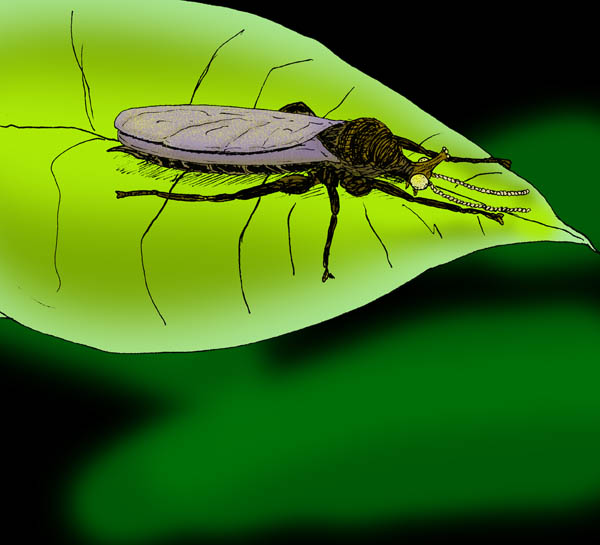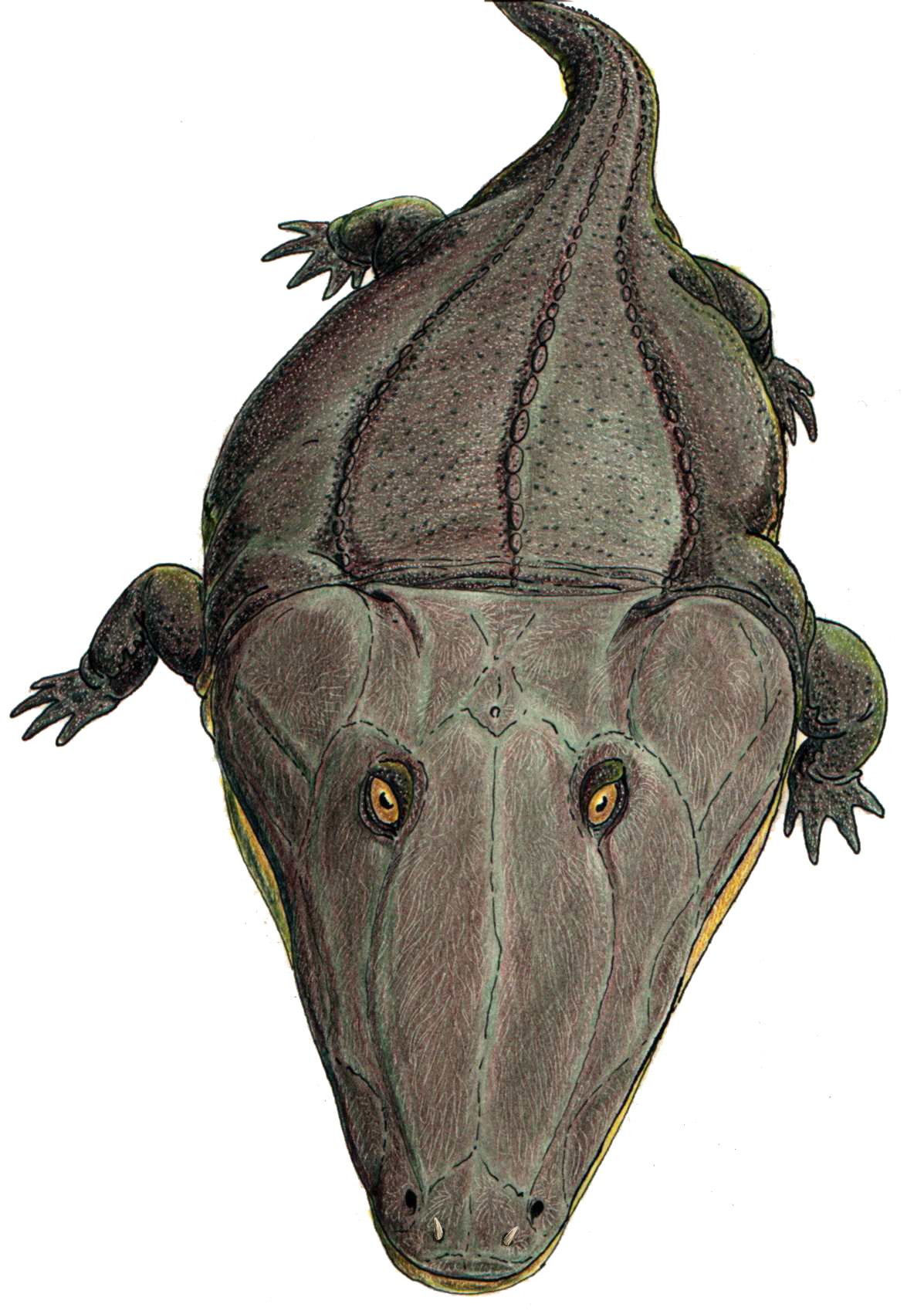|
Tatrasuchus
''Tatrasuchus'' is an extinct genus of temnospondyl from the Middle Triassic of Poland and Germany. It is classified as a member of the family Cyclotosauridae or Mastodonsauridae. It is closely related to the genus ''Cyclotosaurus''. The type species, ''Tatrasuchus kulczyckii'', was named in 1996. Damiani (2001) considered genus ''Kupferzellia'' Schoch (1997) from the Middle Triassic of Germany to be a junior synonym of ''Tatrasuchus'', and recombined its type species, ''K. wildi'' as the second species of ''Tatrasuchus''. This classification was followed by some authors, e.g. Fortuny ''et al.'' (2011); other authors, e.g. Schoch (2008), maintain ''Tatrasuchus'' and ''Kupferzellia'' as distinct genera. However, Schoch & Moreno (2024) synonymized the two genera, maintaining ''T. wildi'' as a distinct species from ''T. kulczyckii''. Phylogeny Below is a cladogram from Fortuny ''et al.'' (2011): References Capitosauria Triassic temnospondyls of Europe {{temnospondyli-stub ... [...More Info...] [...Related Items...] OR: [Wikipedia] [Google] [Baidu] |
1996 In Paleontology
References * Pasch, A. D., K. C. May. 2001. Taphonomy and paleoenvironment of hadrosaur (Dinosauria) from the Matanuska Formation (Turonian) in South-Central Alaska. In: ''Mesozoic Vertebrate Life''. Ed.s Tanke, D. H., Carpenter, K., Skrepnick, M. W. Indiana University Press. Pages 219–236. 1996 in paleontology, 1990s in paleontology 1996 in science, Paleontology ... [...More Info...] [...Related Items...] OR: [Wikipedia] [Google] [Baidu] |
Odenwaldia Heidelbergensis
''Odenwaldia'' is an extinct genus of mastodonsauroid temnospondyl within the family Heylerosauridae. History of study ''Odenwaldia'' is only known from one species, ''O. heidelbergensis'', and was named by Morales & Kamphausen (1984). The holotype, a skull roof and counterpiece cast, were collected from the Middle Bundsandstein (Oberes Konglomerat) near Heidelberg Heidelberg (; ; ) is the List of cities in Baden-Württemberg by population, fifth-largest city in the States of Germany, German state of Baden-Württemberg, and with a population of about 163,000, of which roughly a quarter consists of studen ..., Germany and were first described by Wilhelm Simon in 1961, who thought that the specimen belonged to the trematosaur '' Trematosaurus''. It was then redescribed by Schoch (2008). Description The holotype is the only uncontroversial specimen of this taxon, although others have been referred to the species. ''Odenwaldia'' is diagnosed by several autapomorphies, i ... [...More Info...] [...Related Items...] OR: [Wikipedia] [Google] [Baidu] |
Edingerella Madagascariensis
''Edingerella'' is an extinct genus of temnospondyl amphibian from the Early Triassic of Madagascar. It is a basal capitosaur closely related to '' Watsonisuchus''. Phylogeny Below is a cladogram A cladogram (from Greek language, Greek ''clados'' "branch" and ''gramma'' "character") is a diagram used in cladistics to show relations among organisms. A cladogram is not, however, an Phylogenetic tree, evolutionary tree because it does not s ... from Fortuny et al. (2011): References Capitosauria Triassic temnospondyls of Africa Prehistoric animals of Madagascar Early Triassic amphibians of Africa {{temnospondyli-stub ... [...More Info...] [...Related Items...] OR: [Wikipedia] [Google] [Baidu] |
Capitosauria
Capitosauria is an extinct group of large temnospondyl amphibians with simplified stereospondyl vertebrae. Mainly living as piscivores in lakes and rivers, the Capitosauria and its sister taxon Trematosauria were the only major labyrinthodonts that existed during the Mesozoic in ecological niches broadly similar to those of modern crocodiles, and some grew to very large sizes. At 6 meters in length, the Mid-Triassic '' Mastodonsaurus giganteus'' is not only thought to have been the largest capitosaur, but possibly also the largest amphibian to have lived. The latest known remains are from the Rhaetian of Germany and are referred to '' Cyclotosaurus''. Capitosauria was first named by Schoch and Milner (2000) and further described by Yates and Warren (2000), who assigned ''Lydekkerina'' and Mastodonsauroidea to it. It was described by Damiani (2001) under the name Mastodonsauroidea. In their phylogenetic analysis of temnospondyls, Ruta ''et al.'' (2007) placed ''Lydekkerina'' and ... [...More Info...] [...Related Items...] OR: [Wikipedia] [Google] [Baidu] |
Wetlugasaurus Angustifrons
''Wetlugasaurus'' (meaning "Vetluga River lizard") is an extinct genus of temnospondyl from the Early Triassic (Olenekian) Charkabozh, Kzylsaiskaya, Petropavlovka, Kamennyi Yar and Vetluga Series Formations of northern Russia and Greenland. It had a long skull, and reached a total length of . Phylogeny ''Wetlugasaurus'' in a cladogram A cladogram (from Greek language, Greek ''clados'' "branch" and ''gramma'' "character") is a diagram used in cladistics to show relations among organisms. A cladogram is not, however, an Phylogenetic tree, evolutionary tree because it does not s ... after Novikov (2018) with only Early Triassic Eastern Europe taxa included: References Further reading * ''The Age of Dinosaurs in Russia and Mongolia'' by Michael J. Benton, Mikhail A. Shishkin, David M. Unwin, and Evgenii N. Kurochkin. p. 35-59. * ''Bibliography Of Fossil Vertebrates 1934-1938'' by C. I. Camp Capitosauria Triassic temnospondyls of Europe Olenekian life ... [...More Info...] [...Related Items...] OR: [Wikipedia] [Google] [Baidu] |
Vladlenosaurus Alexeyevi
''Vladlenosaurus'' is an extinct genus of capitosaurian temnospondyl from Russia. It lived during the late Vetlugian (Early Triassic). Based on the type of deposits it was found in, ''Vladlenosaurus'' probably inhabited lacustrine, or lake, habitats. The type species is ''V. alexeyevi'', named in 2000. Description Unlike the flatter, more rounded snouts of other capitosaurs, ''Vladlenosaurus'' had a wedge-shaped snout. This characteristic is also seen in trematosaurians, although it was independently acquired in both cases as a result of convergent evolution. Classification ''Vladlenosaurus'' is similar in appearance to the benthosuchids, a group of trematosauroid temnospondyls, but is more closely related to mastodonsauroids. Among capitosaurs, it shares many features with the basal form ''Wetlugasaurus'', also from the Early Triassic of Russia. ''Vladlenosaurus alexeyevi'' was even considered to be a species of ''Wetlugasaurus'' in a 2006 study. In a 2011 phylogenetic anal ... [...More Info...] [...Related Items...] OR: [Wikipedia] [Google] [Baidu] |
Watsonisuchus
''Watsonisuchus'' is an extinct genus of temnospondyl from the Early Triassic of Australia, Madagascar, and South Africa. It was up to 122 cm long and had a robust skull of 24 cm in length. Three or four species are known:'Dragons in the Dust: The Paleobiology of the Giant Monitor Lizard Megalania'' by Ralph E. Molnar (Pg. 39) ''W. magnus'' (the type species In International_Code_of_Zoological_Nomenclature, zoological nomenclature, a type species (''species typica'') is the species name with which the name of a genus or subgenus is considered to be permanently taxonomically associated, i.e., the spe ...), ''W. aliciae'' (which may instead belong to '' Warrenisuchus''), ''W. gunganj'', and ''W. rewanensis''. References Capitosauria Triassic temnospondyls of Africa Triassic temnospondyls of Australia Early Triassic amphibians of Africa Fossil taxa described in 1966 {{Temnospondyli-stub ... [...More Info...] [...Related Items...] OR: [Wikipedia] [Google] [Baidu] |
Xenotosuchus Africanus
''Xenotosuchus'' is an extinct genus of mastodonsaurid temnospondyl within the family Mastodonsauridae known from the Triassic of South Africa. The genus is based on a skull originally described as ''Parotosuchus'', an animal which it resembled in general build and habit. Description Like many mastodontosaurids, it was a large animal with a large head. Its amphibian Amphibians are ectothermic, anamniote, anamniotic, tetrapod, four-limbed vertebrate animals that constitute the class (biology), class Amphibia. In its broadest sense, it is a paraphyletic group encompassing all Tetrapod, tetrapods, but excl ... life history meant that the distinct shape of the skull roof would change from a generalized tadpole-like skull type through to the distinct adult shape. The head bones are covered in large pits and grooves, indicating extensive dermal armour on the head. Both the upper and lower jaw had tusks, those of the upper jaw being situated on a 2nd row of teeth on the vomer ... [...More Info...] [...Related Items...] OR: [Wikipedia] [Google] [Baidu] |
Teresa Maryańska
Teresa Maryańska (1937 – 3 October 2019) was a Polish paleontologist who specialized in Mongolian dinosaurs, particularly pachycephalosaurians and ankylosaurians. She is considered not only as one of Poland's but also one of the world's leading experts on dinosaurs. Career Initially, Mary's studies were regarding invertebrate paleontology. However, she became a member of the 1964, 1965, 1970, and 1971 Polish–Mongolian expeditions to the Gobi Desert, and changed her focus. She described many finds from these fossils, often with Halszka Osmólska. In 1974, Maryanska and Halszka Osmólska were among the first "women to describe new kinds of dinosaurs". Since 1961, Maryańska was affiliated with the Muzeum Ziemi of the Polska Akademia Nauk and was vice-director there from 1976 to 2006, when she retired. Some of the dinosaurs she described: * '' Homalocephale'' (1974), with Halszka Osmólska * ''Prenocephale'' (1974), with Halszka Osmólska * '' Tylocephale'' (1974), with ... [...More Info...] [...Related Items...] OR: [Wikipedia] [Google] [Baidu] |
Paracyclotosaurus Crookshanki
''Paracyclotosaurus'' (meaning "Near Wheeled Lizard") is an extinct genus of temnospondyl, which would have appeared similar to today's salamander – but much larger, measuring up to long and weighing between . It lived in the Middle Triassic period, about 235 million years ago, and fossils have been found in Australia, India, and South Africa. Although they could live on dry land, ''Paracyclotosaurus'' probably spent most of its time in water. They had flattened bodies and elongated heads, almost long, that vaguely resembled those of modern crocodiles. Discovery and naming The type species ''P. davidi'' is only known from one complete specimen recovered from Australia. It was discovered by quarry miners in a brick pit in St. Peters in Sydney, New South Wales. The discovery, made in 1910, was from a large ironstone nodule within Ashfield Shale which contained the nearly complete skeleton. The reconstruction was finished in July 1914, and was initially determined to be clos ... [...More Info...] [...Related Items...] OR: [Wikipedia] [Google] [Baidu] |
Stanocephalosaurus Pronus
''Stanocephalosaurus'' (stano from Greek stenos, meaning “narrow”, cephalo from Greek kephalē, meaning “head”) is an extinct genus of large-sized temnospondyls living through the early to mid Triassic. The etymology of its name most likely came from its long narrow skull when compared to other temnospondyls. ''Stanocephalosaurus'' lived an aquatic lifestyle, with some species even living in salt lakes. There are currently three recognized species and another that needs further material to establish its legitimacy. The three known species are ''Stanocephalosaurus pronus'' from the Middle Triassic in Tanzania, ''Stanocephalosaurus amenasensis'' from the Lower Triassic in Algeria, and ''Stanocephalosaurus birdi'', from the middle Triassic in Arizona. ''Stanocephalosaurus rajareddyi'' from the Middle Triassic in central India needs further evidence in order to establish its relationship among other Stanocephalosaurs. Like other temnospondyls, ''Stanocephalosaurus'' was an aqu ... [...More Info...] [...Related Items...] OR: [Wikipedia] [Google] [Baidu] |


